In This Issue
- Tech Is Also Charlie
- What Did We Learn?
- Autonomous Data Ctr
- Report from the CEO
- CES: IoT Hits Home
- IoT Connected Life
- Samsung Harmony
- Big-Name Companies
- IoT Dominates CES
- 9 Best Ideas from CES
- FTC Warns on Security
- Wheeler Hints at Rules
- BitTorrent’s First Film
- IoT Investors in 2015
- Big Data Driving IoT
- CES: IoT Not All Shiny
- Coming DCIA Events
Tech Is Also Charlie
Excerpted from Hacked Report by Giulio Prisco
 Last week, terrorist attacks in Paris took the lives of seventeen persons, including journalists and cartoonists of the satirical weekly newspaper Charlie Hebdo, who were “guilty” of informing and entertaining the public.
Last week, terrorist attacks in Paris took the lives of seventeen persons, including journalists and cartoonists of the satirical weekly newspaper Charlie Hebdo, who were “guilty” of informing and entertaining the public.
The disgusting attack against freedom of thought and the free press has been universally condemned, and it may seem unnecessary for a tech magazine to add its voice to the global outrage.
But every journalist is Charlie. In particular, every technology journalist is Charlie, because Tech Is Charlie.
Science and technology advance with free information, free inquiry, and free dissent. In a healthy society that can provide a fertile ground for science and the development of new technologies, everyone must be free to express his or her dissent by whatever non-violent means, including satire.
History shows that important scientific advances, paradigm shifts, and revolutionary new technologies are often developed by free spirits who don’t respect authority, question everything, and aren’t afraid to throw stones at sacred cows.
It can be argued that the success of the Western civilization, as far as scientific and technical progress is concerned, started with society’s reaction against the secular power of the church. The Inquisition burned Giordano Bruno — but they couldn’t burn Newton.
I am not unconditionally supportive of our Western civilization; and I regret our harmful actions against the rest of the world. But our civilization has developed the concept of a secular society with civil rights, freedom of thought, information, non-violent dissent, and satire. Read more…
CES: It’s Come and Gone, What Did We Learn?
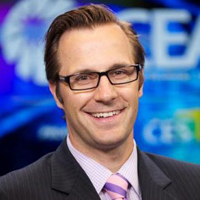 By now, hopefully you’re recovered from all the action at the 2015 International CES. With all the new products and innovations announced, you may have missed some of the highlights.
By now, hopefully you’re recovered from all the action at the 2015 International CES. With all the new products and innovations announced, you may have missed some of the highlights.
What made headlines at the show? What did we learn? What’s in store for the year ahead?
These questions and more will be answered during an upcoming webcast featuring Shawn DuBravac, CEA’s Chief Economist and Senior Director of Research.
Join Shawn Dubravac as he explores the highlights from the 2015 International CES, and tells us what we need to know in the year ahead to keep our businesses ahead of the competition!
Participants will learn about highlights from the 2015 International CES, key product announcements, major partnership announcements, important industry trends from the show, and the direction the industry is headed
Who should attend? Everyone involved in the consumer tech industry including key decision makers, company executives, industry analysts, manufacturers, and retailers.
The webcast will take place on Thursday January 15th from 3:00 to 4:00 PM ET. Please register by Wednesday, January 14th. Registration is limited.
Feel free to contact the CEA Webinar Team with questions.
Autonomous Data Center — The CIO’s End Goal
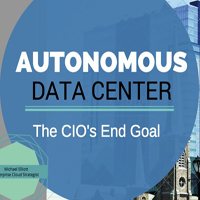 Progressive chief information officers (CIOs) want out of the data center market, at least data centers as we have known them for the past few decades.
Progressive chief information officers (CIOs) want out of the data center market, at least data centers as we have known them for the past few decades.
The CIO’s vision is for an autonomous data center; a data center that operates without the constant supervision of storage, network, database, and exchange administrators.
A data center that virtually runs itself; automatically adjusting compute, networking, and storage to adapt to the changing demands of the applications and services critical to the success of the business.
So how do large enterprises, burdened with security, compliance, application interdependency, and legacy architectures, begin building towards an autonomous data center?
How does the CIO begin thinking strategically about the evolution of the data center and understand the building blocks that will be needed to one day achieve this vision?
Join DCIA Cloud Evangelist Michael Elliott for an informative and valuable webinar that will begin the journey by defining the autonomous data center, understanding the strategy required for realizing this vision, and exploring the ultimate impact to information technology (IT).
The forty-five minute webcast is scheduled to take place on Wednesday January 21st at 12 noon ET. DCINFO readers are urged to register herefor this webinar at no charge.
Report from CEO Marty Lafferty
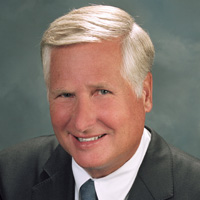 Congratulations to Consumer Electronics Association (CEA) President & CEO Gary Shapiro and the entire CEA team for mounting the largest Consumer Electronics Show (CES) in history — whether measured by attendance, square footage, entrepreneurship, or diversity — this week in Las Vegas, NV.
Congratulations to Consumer Electronics Association (CEA) President & CEO Gary Shapiro and the entire CEA team for mounting the largest Consumer Electronics Show (CES) in history — whether measured by attendance, square footage, entrepreneurship, or diversity — this week in Las Vegas, NV.
The 2015 International CES attracted 170,000 total attendees (versus 160,000 in 2014), occupied 2.2 million square feet (up from 2.05 million in 2014), hosted 3,600 companies including 375 start-ups, and welcomed 40,000 international delegates from 150 countries outside the US.
The Distributed Computing Industry Association’s (DCIA) principal on-camera host Michael Elliott and I are especially grateful to industry leaders, entrepreneurs, and analysts for contributing valuable and insightful segments — in the form of interviews, demos, and presentations — for DCIA’s Internet of Things (IoT) Marathon webcast.
Our HD-video production studio at Sands Expo Center had a full schedule each day of the show, and our remote crews were equally busy capturing numerous additional comments and displays in exhibit suites, booths, and meeting rooms throughout CES.
One of the real marathon aspects of this endeavor will be post-production: editing is now underway with the goal of premiering the fully produced IoT webcast — searchable by speaker, company, and subject matter — on February 1st.
We thank every segment contributor, starting with CEA Chief Economist & Senior Director of Research Shawn Dubravac, who provided the opening interview. His new book, Digital Destiny, which debuted at CES, is now available here.
LV Sands Corp. Global Chief Information & Innovation Officer (CIIO) Les Ottolenghi introduced the six major sections of the webcast from the perspective of a major enterprise end-user:
These sections include five vertical categories — smart objects for fitness and healthcare; programmable homes and energy management; media entertainment and social networking solutions; geolocation services and vehicular automation; and retail, public, space, and manufacturing environments; as well as an exploration of key hurdles to be overcome for IoT to reach its full potential — power consumption, cybersecurity, and interoperability.
IBM Director of Global Consumer Electronics Scott Burnett, Internet of Things Industrial Sector Lead Ted Connell, and Internet of Things Foundation Product Manager Neil Postlethwaite offered their insights into each of the above major areas — enhanced with additional coverage of demos video-recorded at IBM’s Client Center at The Venetian focusing on smart homes, media entertainment, retail, and connected vehicles.
ARM Director of Segment Marketing Jeff Chu gave a guided tour of the company’s exhibit area, and Gracenote Co-Founder & Chief Strategy Officer Ty Roberts presented its IoT offerings at Gracenote’s Lounge.
State of Israel Deputy Economic Minister Oded Grinstein provided his views on IoT innovation in that country; and Connected Vehicle PresidentScott McCormick offered the perspective of another actively involved trade association.
Among the many connected-device highlights that will be featured in the DCIA’s IoT Marathon are studio demonstrations of SmartSoles by GTX Corp. Founder, Chairman & CEO Patrick Bertagna; Sentris by Sentri Co-Founder, Strategy & Marketing Wendy Qi; Bubbles for touring, shopping, and enhancing live events by Interface Foundry CEO & Creative Technologist Rachel Law; Linea headsets by Caeden President & CEO Nora Levinson; and Cyclops by Genos Corporation’s Co-Founder & CTO Mike West.
Share wisely, and take care.
At the International CES: The IoT Hits Home
Excerpted from NY Times Report by Molly Wood
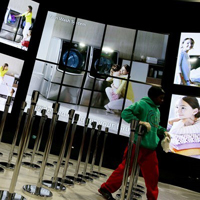 By just about any measure, the International Consumer Electronics Show is big. The event, held in Las Vegas, NV, attracts more than 150,000 visitors. It occupies over two million square feet, the equivalent of about 35 football fields, of exhibition space. More than 3,500 companies come to show their wares.
By just about any measure, the International Consumer Electronics Show is big. The event, held in Las Vegas, NV, attracts more than 150,000 visitors. It occupies over two million square feet, the equivalent of about 35 football fields, of exhibition space. More than 3,500 companies come to show their wares.
But something has been lacking in recent years: big excitement. Companies have promoted largely unwelcome new versions of existing products, like 3-D television, or new devices with little consumer appeal, like clunky virtual-reality headsets.
This year, though, the International CES has been energized by a wave of new exhibitors chasing a top trend in consumer electronics: the Internet of Things (IoT). The term refers to the concept of a world full of connected devices controlled through a consumer-friendly hub, like a smartphone app.
The new devices at the event, which opened to the news media on Monday and to the public on Tuesday, include a Wi-Fi-connected ceiling fan controlled by a Nest Learning Thermostat, and automated door locks, light switches and LED bulbs. Under Armour, the sports apparel company that has experimented with smart sports clothing, is exhibiting at CES, as well as the Girl Scouts of America, which is introducing a new digital app.
“This is the digital lifestyle not just coming into concept but into practical execution,” said John Curran, Managing Director of Communications, Media and Technology at the consulting firm Accenture. “The Internet of Things is touching almost every aspect of your life. Read more…
IoT Showcases the Connected Life at CES
Excerpted from LA Times Report by Andrea Chang
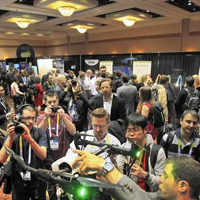 Everywhere you look at the Consumer Electronics Show (CES),
Everywhere you look at the Consumer Electronics Show (CES),
it seems there’s nothing that can’t be connected to the Internet: tennis rackets, coffee makers, watches, jewelry, baby clothing, pet accessories, oven ranges, and infinitely more appliances and household goods are all getting high-tech upgrades.
It’s called the “Internet of Things (IoT).”
To Shawn DuBravac, Chief Economist of the Consumer Electronics Association (CEA), which organizes the International CES, the important consideration is not whether a product can be digitized, but whether it should be. The question, he said, is ultimately “Does it make sense?”
Historically, crowds have flocked to the annual show to find out “what’s technologically possible, what’s technologically feasible,” DuBravac said. “But we’re now shifting, and no longer is the focus on what technologically can be done, it’s what is technologically meaningful.”
With so many competing Internet-connected products vying for attention at the massive event — more than 150,000 people are expected to attend Tuesday through Friday — many will ultimately fail. CES has become a place to “try to differentiate the winners from the losers,” DuBravac said. “As we digitize and connect and sensorize an increasing swath of our experience, CES becomes that pruning ground.”
It’s hard to know where to start trimming. There are 900 IoT exhibitors at CES, the largest-ever showcase of such offerings. Read more…
Samsung Preaches Harmony in Internet of Things Push
Excerpted from Wall St. Journal Report by Jonathan Cheng
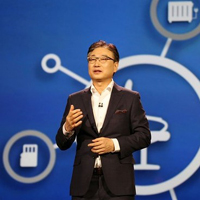 Openness, togetherness, and collaboration.
Openness, togetherness, and collaboration.
If Samsung Electronics has ambitions of dominating what it calls the next frontier in technology innovation, it wants to do so only with the loftiest and gentlest of words.
The “Internet of things” or “IoT” as it’s called in Silicon Valley parlance purports to link the world’s various appliances and devices, from refrigerators and televisions to smartphones and light bulbs.
And BK Yoon, one of Samsung’s three co-chief executives, wants you to know that it’s a very big deal.
“Huge,” he said, during a keynote speech at the Consumer Electronics Show in Las Vegas, NV. “A game changer.” “The most important topic for our industry right now,” something that “will revolutionize our lives” and “unlock infinite possibilities.”
Diving into the IoT also makes good business sense for Samsung, whose dominance in the global smartphone industry is under heavy assault. Samsung, which is expected to offer preliminary fourth-quarter operating profit figures this week, has suffered a string of disappointing earnings reports over the past year as competitors in China, India, and elsewhere eat into its market share.
As a result, Samsung is trying to seize leadership in the development of the IoT, which gives it a potential new channel for generating profits.Read more…
2015 CES: Big-Name Companies Betting on IoT
Excerpted from InvestorPlace Report by Robert Martin
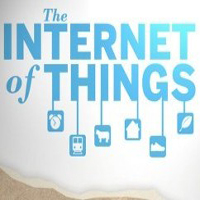 Less than a week into 2015, it’s pretty safe to crow the “Internet of Things (IoT)” as the buzzword of the year — at least it sure seems that way based on the Consumer Electronics Show (CES) taking place in Las Vegas, NV this week. At the 2015 CES, everyone from hot tech companies to appliance makers to apparel makers were unveiling new, sexy connected devices.
Less than a week into 2015, it’s pretty safe to crow the “Internet of Things (IoT)” as the buzzword of the year — at least it sure seems that way based on the Consumer Electronics Show (CES) taking place in Las Vegas, NV this week. At the 2015 CES, everyone from hot tech companies to appliance makers to apparel makers were unveiling new, sexy connected devices.
For those who need a refresher, the IoT refers to the idea that more and more devices — from your smartphone to your television to your car — will be connected to the web in coming years. In fact, experts predict there could be as many as 212 billion by the year 2020.
Of course, tech companies getting in on this trend is hardly news. Just last month, Intel announced a new suite of products called the IoT Platform. But beyond that, let’s take a look at a few big-name companies that followed in Intel’s footsteps at 2015 CES.
BlackBerry: Struggling phone-maker BlackBerry is the first name that’s hoping the IoT can give its business a much-needed boost. The company is hoping that its “reputation for security and reliability” will be enough reason for companies in the automotive and asset-tracking industries to install BlackBerry technology on their devices, according to CBCNews. BlackBerry also plans to expand its IoT push to smart energy and healthcare.
Samsung: Next up, we have another phone-maker, although Samsung makes much much more than just phones. Read more…
Internet of Things Dominates CES in Las Vegas
Excerpted from Santa Cruz Sentinel Report by Troy Wolverton
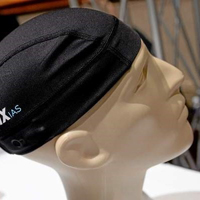 As the official pre-show showcase strongly indicated, the International Consumer Electronics Show (CES), which ran all week in Las Vegas, really was dominated by the Internet of Things (IoT).
As the official pre-show showcase strongly indicated, the International Consumer Electronics Show (CES), which ran all week in Las Vegas, really was dominated by the Internet of Things (IoT).
At the CES Unveiled press preview, companies exhibited a wide range of everyday gadgets notable for their inclusion of sensors and ability to connect to other devices. On display were everything from fitness bands and smartwatches to connected coffee pots and even bike pedals.
Among the more notable or unusual products rolled out:
A “smart” air vent from a company called Ecovent that, in conjunction with temperature sensing power plug, will open and close automatically to adjust the temperature in particular rooms. The vent and the power plugs can communicate with smart thermostats such as Nest’s or with a smartphone app.
A Wi-Fi connected tea kettle from a company called Smarter that allows users to get their tea water hot before they get out of bed via a smartphone app. They can also program the kettle to turn on when they arrive home or pull up in the driveway.
“Smart” binding clips for snowboards from Japanese company Cerevo that records user’s weight balance on the board and the movement and vibration of the board. Users can download the data to a smartphone app, allowing them to analyze and visualize their runs. Read more…
The 9 Best Ideas from 2015 CES
Excerpted from FastCoDesign Report by Mark Wilson
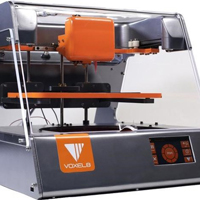 The Consumer Electronics Show (CES) brings tens of thousands of new products to our shelves. Here are the nine you actually need to know about from the 2015 show.
The Consumer Electronics Show (CES) brings tens of thousands of new products to our shelves. Here are the nine you actually need to know about from the 2015 show.
You won’t find a journalist alive who covers the annual CES and doesn’t find it a miserable experience. You’re basically trapped in the bowels of Las Vegas casinos, staring at 200 identical TVs and trying to distinguish the difference.
But it’s all almost worth it. Because every year, a few standout products pave the way for an entire industry of innovation. These are nine artifacts, seemingly sent back from the future to show us what’s coming next.
3-D printing has a lot of limitations, the worst of which may be that most home 3-D printers are printing solely in plastic. But Makerbot has introduced new filaments that, while still plastic at heart, contain tiny particles of wood, stone, or metal, resulting in products that can mimic the finish of limestone or bronze. You won’t be able to print your next set of steel cookware on a Makerbot, but for crafts and jewelry, it’s an exciting development in domestic 3-D printing.
Another big limitation in 3-D printing is that, if you want to create an electronic device of any sort, you usually have to print the body in pieces, which will jigsaw together and sandwich themselves around the functional components. But at CES, a printer called Voxel8 demonstrated that it could print the plastic body and metal circuitry of a drone, all at once. Read more…
FTC Warns IoT Businesses to Bake In Privacy and Security
Excerpted from TechCrunch Report by Natasha Lomas
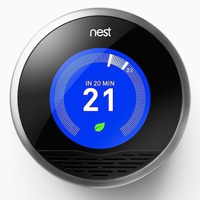 The US Federal Trade Commission (FTC) has raised concerns about the complexity and privacy risks posed by the rise of an Internet of Things (IoT), with some 25 billion connected objects predicted to be online in 2015, and so-called smart home devices predicted to number around 25 million this year.
The US Federal Trade Commission (FTC) has raised concerns about the complexity and privacy risks posed by the rise of an Internet of Things (IoT), with some 25 billion connected objects predicted to be online in 2015, and so-called smart home devices predicted to number around 25 million this year.
Concerns about privacy could encourage consumer mistrust of IoT devices, the FTC has warned, having a knock-on impact on consumer adoption. To avoid that scenario it has detailed some of the measures it thinks IoT companies should take to mitigate privacy risks.
FTC Chairwoman Edith Ramirez was speaking at the Consumer Electronics Show in Las Vegas, NV, after touring the show floor where exhibitors are showing off a swathe of connected objects they hope consumers will be installing in their homes in future.
“The Internet of Things has the potential to provide enormous benefits for consumers, but it also has significant privacy and security implications,” warned Ramirez.
“Connected devices that provide increased convenience and improve health services are also collecting, transmitting, storing, and often sharing vast amounts of consumer data, some of it highly personal, thereby creating a number of privacy risks.”
She went on to detail three particular privacy challenges that companies in the IoT space will need to grapple with. Read more…
CES: Wheeler Hints at Utility-Style Rules for Internet
Excerpted from CED Magazine Report
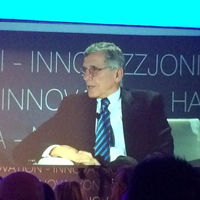 US Federal Communications Commission (FCC) Chairman Tom Wheeler appears poised to propose new rules that would classify Internet service providers (ISPs) as public utilities in a move designed to ensure everyone has the same access to free content online.
US Federal Communications Commission (FCC) Chairman Tom Wheeler appears poised to propose new rules that would classify Internet service providers (ISPs) as public utilities in a move designed to ensure everyone has the same access to free content online.
Wheeler strongly indicated Wednesday that he favors the shift to tougher regulations, describing it as “just and reasonable” during an appearance in Las Vegas, NV at the International CES, a technology industry gadget show.
The remarks suggest that the head of the FCC is falling in line with President Barack Obama, who announced in November that he favors governing ISPs like telephone companies to preserve a “free and open” Internet.
Major ISPs fiercely oppose the change, arguing it will kill jobs and discourage them from investing in network upgrades.
Any revision to Internet regulations still must gain the support of at least two other commissioners besides Wheeler on the FCC’s five-member voting panel.
Wheeler said he intends to release the full details of his proposal February 5th. The FCC is scheduled to vote on the issue February 26th.
A federal appeals court threw the future direction of Internet regulation into limbo nearly a year ago when it overturned previous rules designed to preserve “Net Neutrality.” Read more…
BitTorrent to Release its First Feature Film
Excerpted from Fast Company Report by Evie Nagy
 Before Sony decided to release “The Interview” on demand on Christmas Eve (after initially canceling release plans altogether), BitTorrent made a case for distributing the controversial Seth Rogen, James Franco comedy through itsBundle service. Now, the file sharing network will in fact release its own first feature film as a pay-what-you-want (PWYW) Bundle on February 13th: comedian David Cross‘s directorial debut, “HITS.”
Before Sony decided to release “The Interview” on demand on Christmas Eve (after initially canceling release plans altogether), BitTorrent made a case for distributing the controversial Seth Rogen, James Franco comedy through itsBundle service. Now, the file sharing network will in fact release its own first feature film as a pay-what-you-want (PWYW) Bundle on February 13th: comedian David Cross‘s directorial debut, “HITS.”
It will be the first wide release for the film, which debuted at Sundance last year. Written and directed by Cross, HITS is a dark comedy about the pitfalls of Internet stardom (billed as “a true story that hasn’t happened yet”).
A young woman (Meredith Hagner) who’s obsessed with landing a role on The Voice instead has to deal with the instant celebrity of her activist father (Matt Walsh, glorious as bumbling communications director Mike McLintock on Veep) after his outburst at a town hall meeting goes viral. The film also features comedian Wyatt Cenac and Cross’s Arrested Development costar Michael Cera.
BitTorrent’s Bundle product has been used by a number of recording artists to sell albums and multimedia content, as well as by film studios to distribute extended trailers and ancillary material, but this will be the company’s first feature-length release. BitTorrent’s peer-to-peer (P2P) technology allows for sharing and downloading large media files, and Bundle protects the content behind a gate that can be unlocked for a price set by the publisher, or in this case whatever the viewer wants to pay. Read more…
What IoT Investors Need to Watch in 2015
Excerpted from The Motley Fool Report by Chris Neiger
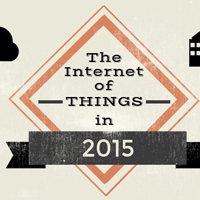 There is plenty of media coverage of the Internet of Things, or IoT. I’ve contributed my fair share. But while many of those stories focus on connected thermostats, fitness bands, and smart watches, there are much larger trends influencing IoT.
There is plenty of media coverage of the Internet of Things, or IoT. I’ve contributed my fair share. But while many of those stories focus on connected thermostats, fitness bands, and smart watches, there are much larger trends influencing IoT.
Admittedly, these trends aren’t anything new. Big Data, security, and even predictive maintenance have all been around for a while. But in 2015, we can expect each of them to become a much bigger part of IoT than ever before.
Big Data will get even bigger. Cisco Systems expects 25 billion “things” to become connected to the Internet this year, and managing all the data those things create will become increasingly important.
David Cearley, a Vice President at Gartner, said recently in the research company’s report on strategic technology trends for 2015 that, “Organizations need to manage how best to filter the huge amounts of data coming from the IoT, social media, and wearable devices, and then deliver exactly the right information to the right person, at the right time. Analytics will become deeply, but invisibly embedded everywhere.”
In short: Companies can’t just make IoT devices, they must also manage the data they collect.
We’ve already seen evidence of this. Last year, big IoT players Intel, General Electric, and Sierra Wireless all introduced or expanded their own IoT platforms for managing embedded connections. Read more…
In 2015 Big Data Will Drive the Internet of Things
Excerpted from InfoWorld Report by Yves de Montcheuil
 With the Consumer Electronics Show (CES) in Las Vegas, NV capturing a lion’s share of this week’s coverage in both IT and consumer media, it seems obvious that 2015 will be The Year of the Connected Object. Smart home appliances, wearables, digital health devices, robots, 3D printers, entertainment systems, car electronics, and other sensors and trackers of all sorts are setting the pace of the Internet of Things (IoT) this year. Will Time Magazine go so far as to feature on their cover this year a Fitbit fitness tracker, a Roomba cleaning robot, or a Google self-driving car?
With the Consumer Electronics Show (CES) in Las Vegas, NV capturing a lion’s share of this week’s coverage in both IT and consumer media, it seems obvious that 2015 will be The Year of the Connected Object. Smart home appliances, wearables, digital health devices, robots, 3D printers, entertainment systems, car electronics, and other sensors and trackers of all sorts are setting the pace of the Internet of Things (IoT) this year. Will Time Magazine go so far as to feature on their cover this year a Fitbit fitness tracker, a Roomba cleaning robot, or a Google self-driving car?
These connected objects, which are all the craze, belong to two categories: sensors, and actors (some belong to both). Sensor objects measure data, while actor objects perform an action. Examples of sensor objects include thermostats, activity trackers, heartbeat monitors, and wear-and-tear sensors; examples of actor objects include thermostats (again), smart switches, and pacemakers. Some objects are both sensor and actor: the smart thermostat is a good example, but so are many implantable medical devices or industrial appliances.
Connected objects, by their very nature, are not autonomous. They communicate at regular intervals with a service provider which centralizes the data their have collected, enriches it with data from other connected objects and/or external data sources, produces reports/analytics, and if applicable provides instructions to the objects.
For example, a smart thermostat periodically measures room temperature, and reports this measure to its backend service (typically, cloud-based). The backend service combines the reported temperature, weather service data, and information about the routine of family members.Read more…
2015 CES: Internet of Things Not All Shiny
Excerpted from Information Week Report by Thomas Claburn
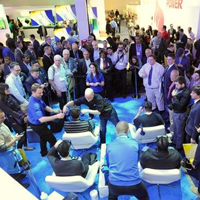 More than 160,000 people have come to the 2015 CES in Las Vegas, NV to get a glimpse of a world where everything connects with everything else. What began as a trade show to showcase televisions, turntables, and other consumer gadgets has become a nexus for the exchange of data.
More than 160,000 people have come to the 2015 CES in Las Vegas, NV to get a glimpse of a world where everything connects with everything else. What began as a trade show to showcase televisions, turntables, and other consumer gadgets has become a nexus for the exchange of data.
Connections allow the exchange of data. CES has always been about personal connections and business connections. But in the past few years, as mobile devices have become ubiquitous and cloud services have matured, it has shone a spotlight on the appeal of connecting devices, for device makers and possibly device buyers.
Our devices allow the interchange of data about people, about us. And such data turns out to be hugely valuable to companies that aspire to build ongoing relationships with customers. It allows companies to understand how their products are being used and to sell more products and services.
At Panasonic’s media conference on Monday, Julie Bauer, President of Panasonic’s Consumer Sales Division, described her group’s goal as “expanding touch-points with consumers.” The company announced upcoming products including a line of TVs with a Firefox OS interface, a Home Monitoring & Control Kit with no monthly fee, and a virtual mirror that will help cosmetics companies offer makeup recommendations to clients.
These products fit into the Internet of Things (IoT), the growing network of connections between computer-enabled objects. But the IoT is a problematic term because it emphasizes the things rather than the people using them. Really, it is the Monitoring of People and Their Property. The IoT connects our stuff to us, for better or worse. Read more…
Coming Events of Interest
State of the Net Conference — January 27th in Washington, DC. With unparalleled opportunities to network and engage on key Internet policy issues, this is the largest Internet policy conference in the US and is recognized for its balanced blend of private and public sector participants.
Datacloud South East Asia — April 1st-2nd in Johor, Malaysia. Datacloud South East Asia will assess the energy, scalability, security, architecture, and software challenges confronting operators of data centers and enterprises engaged in or considering transitions to the cloud.
NAB Show — April 11th-16th in Las Vegas, NV. Popular and fresh attractions for 2015 include the Cloud Pavilion (CP) for asset management; Connected Media Live (CML), focusing on the consumer experience; the Drone Pavilion (DP), featuring a fully enclosed “flying cage” for demonstrations; and the New Media Expo (NMX).
Internet of Things Conference — April 15th-17th in San Diego, CA. The IoT Con will focus on how companies are using a variety of technologies, including ZigBee radios, Wi-Fi, and machine-to-machine (M2M)software, to connect things to the Internet, and how they are achieving real business benefits from doing so.
CES Asia — May 25th-27th in Shanghai, China. The success of the 2015 International CES builds strong momentum for CES Asia. With strong exhibitor demand for CEA’s inaugural event, the show will be curated with select qualifying companies permitted to exhibit.
Internet of Things World Forum (IoTWF) — October (2015 Dates TBD) in Dubai, UAE. IoTWF is an exclusive event that brings together the best and brightest thinkers, practitioners, and innovators from business, government, and academia to accelerate the market adoption of the Internet of Things.
rigerators.
Samsung, best known as the world’s No.1 smartphone maker, saw its revenue fall sharply last year as smartphone sales reduced, partly on the rise of Chinese manufacturers armed with low-end models.
Samsung’s global market share in smartphones declined 7.7 percentage points from a year earlier. Read more…
Intel Driving IoT towards the Cloud
Excerpted from Talkin’ Cloud Report by Mike Vizard
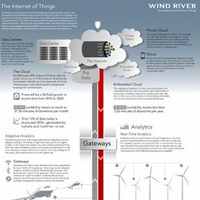 Going into 2015, there is certainly a buzz surrounding anything to do with the Internet of Things (IoT). The challenge is that building IoT solutions represents a massive investment in what are largely unproven applications.
Going into 2015, there is certainly a buzz surrounding anything to do with the Internet of Things (IoT). The challenge is that building IoT solutions represents a massive investment in what are largely unproven applications.
To help reduce that risk, Wind River, a unit of Intel that specializes in embedded systems running a distributed of Linux that it developed, has launched the Wind River Edge Management System, a cloud service that provides a central console for managing devices connected to the Internet.
Intel has a vested interest in all thing IoT because most of the gateways that devices will be connected to the Internet through are essentially going to high-margin x86-class servers. Those gateways in turn will drive demand for application workloads deployed in private and public cloud services, most of which will be running on x86 servers.
In the case of the Wind River Edge Management System, agent software running on the end-point enables data capture, rules-based data analysis, and response, configuration, and file transfer.
Ido Sarig, General Manager for IoT Solutions at Wind River, said Wind River is not only looking to solution providers in the channel to integrate IoT devices and gateways, but also to build applications that address innovative IoT use cases.
After all, while IoT has a lot of potential, most businesses don’t really understand how to best apply it. Read more…
Internet of Things to Boom in 2015
Excerpted from Kioskea Report by Nicole Motta
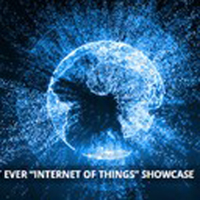 The Internet of Things (IoT) is taking off, with 2015 set to be the Year of IoT, though what that means and where that will take us is still unclear.
The Internet of Things (IoT) is taking off, with 2015 set to be the Year of IoT, though what that means and where that will take us is still unclear.
It has yet to be decided what 2014 will stand for as the year comes to a close.
Some say 2014 will be known as the “Year of the Hacker” with devastating attacks on Sony Pictures, JPMorgan,Snapchat, online gaming platforms Xbox Live and PlayStation Network, retail stores Target and Home Depot, and many more.
Earlier this year, CNN Money reported that nearly half of all American adults have been hacked, a number that has likely grown since May’s report and is expected to continue to rise.
Others, like the Computer Electronics Association’s Jim Barry, think 2014 will be looked back on as the “Year Drones Took Off.”
Barry notes four main advancements that have started to push unmanned aerial vehicles into the consumer sector: the marriage of drones and action camcorders; smartphone controls; consumers’ increasing desire to share and record day-to-day activities on social media; and more robust wireless connections. Drones will have their own session at the Consumer Electronics Show. Read more…
Why 2015 Will Be the Year of the IoT
Excerpted from Business Spectator Report by Geoff Webb
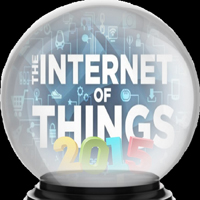 We’ve been talking about the Internet of Things (IoT) for what feels like years now. Yet the reality is that while it’s quickly starting to dominate technology conversations, it’s still a new and not broadly understood trend.
We’ve been talking about the Internet of Things (IoT) for what feels like years now. Yet the reality is that while it’s quickly starting to dominate technology conversations, it’s still a new and not broadly understood trend.
According to research analyst group IDC, the worldwide IoT market will increase 133 per cent to $3.04 trillion in 2020 while the number of IoT-connected units will reach approximately 50 billion in 2020. The forecast predicts vendors, service providers, and systems integrators will have to find ways to integrate products and solutions in order to be successful in the market.
As with any other potentially highly disruptive trend, we tend to develop a sense of buzzword fatigue long before the real impact is felt. This is especially true for IoT if for no other reason than so many people are discussing it in so many different contexts. But it would be a mistake to underestimate both the rapidity of change and the impact of the IoT.
It’s moving fast – far faster than anything we’ve seen before. From early thinking around smart devices to the current developments in connecting home management, appliance, and car computers to form a much smarter ‘home’ experience. What we’re seeing is one part of the IoT building on others, and as each layer gets deployed, so it opens up more opportunities to create new smarter technologies. The effect is shifting from additive to geometric, and we should expect to see this really accelerate next year. We’re not overstating the rate of growth of the IoT, we’re chronically underestimating it.
As the IoT grows, so the impact of the technologies will grow with it. Read more…
Smart Objects, Infrastructures, and Services in the IoT
 The Internet of Things (IoT) is a novel paradigm that is shaping the evolution of the future Internet. According to the vision underlying the IoT, the next step in increasing the ubiquity of the Internet is to connect inanimate objects.
The Internet of Things (IoT) is a novel paradigm that is shaping the evolution of the future Internet. According to the vision underlying the IoT, the next step in increasing the ubiquity of the Internet is to connect inanimate objects.
By providing objects with embedded communication capabilities and a common addressing scheme, a highly distributed and ubiquitous network of seamlessly connected heterogeneous devices is formed, which can be fully integrated into the current Internet and mobile networks.
Thus, it allows for the development of new intelligent services available anytime, anywhere, and by anyone and anything.
When human interaction is absent from the system dynamics, the vision is also referred to as machine-to-machine (M2M) communications. Many applications with high social and business impact fall under the IoT/M2M umbrella, including personal healthcare, smart grids, smart city, surveillance, home automation, and intelligent transportation; and it is strongly expected that new applications will emerge once the enabling technologies reach a stable state.
The aim of this special issue, for which we are issuing a call for papers, is to bring together practitioners and researchers from both academia and industry to discuss recent advances in theory, application, and implementation of the IoT technologies, protocols, algorithms, and services. Read more…
Industrial Internet of Things Is on its Way
Excerpted from EE Times Report by Rich Quinnell
 When looking at the consumer side of the Internet of Things (IoT), it is easy to conclude that the IoT is still mostly hype. There are many products being introduced with little more to offer than novelty and a slight increase in convenience. But there is still little of the synergy that the IoT is expected to manifest, and little of measurable value yet to arise.
When looking at the consumer side of the Internet of Things (IoT), it is easy to conclude that the IoT is still mostly hype. There are many products being introduced with little more to offer than novelty and a slight increase in convenience. But there is still little of the synergy that the IoT is expected to manifest, and little of measurable value yet to arise.
The industrial applications of the IoT, on the other hand, are proving themselves. Intel, for instance, ran a trial at its plant in Penang, Malaysia, saving some $9 million by increasing productivity, reducing component failures, and improving equipment uptime. And this was simply by instrumenting one component of the production line: the CPU testers. An analysis by David Floyer, CTO of information resource Wikibon, shows the increases in efficiency of industrial plant equipment as well as reductions in maintenance that IoT implementations provide were always at least 10% and could range as high as 25%.
Industries are responding to this proven ROI by beginning to adopt IoT technologies across the board. According to survey results reported by Business Insider, some 18% of industrial machinery companies are already using IoT in some capacity. Business projections by Floyer predict an investment of some $500 billion in industrial IoT by 2020, with an annual value returned of up to $1.2 trillion.
These early results are primarily from point solutions, however. Read more…
IT World Looks to Cloud and Big Data for Growth in 2015
Excerpted from Financial Post Report by Lynn Greiner
 Every year around this time, we get inundated with predictions of what to look for in IT when the calendar turns.
Every year around this time, we get inundated with predictions of what to look for in IT when the calendar turns.
Sometimes those forecasts come true, sometimes they’re merely wishful thinking; but it’s usually interesting to see what the pundits believe is in store.
Let’s take a peek into their crystal balls.
International Data Corporation (IDC) analysts made a series of predictions, some rather startling, about the cloud.
For example, they said that three quarters of Infrastructure as a Service (IaaS) offerings would be redesigned, rebranded, or discontinued in the next 12-to-24 months, despite the expectation of rapid growth as competitors rise up to challenge market leader Amazon.
And by 2016, more than half of organizations building hybrid clouds will acquire workload-aware cloud management products; 65% of the criteria used to choose which workloads will be cloud-ified will be tied to data privacy regulations.
“Digitization and transformation to virtualized, on-demand provider-based services are driving very rapid internal IT change,” said Robert Mahowald, Program Vice President at IDC SaaS & Cloud Software research practice. “IT buyers are shifting steadily toward cloud-also and cloud-first strategies and nearly all are reconsidering their IT best practices to embrace hybrid cloud construction and operations.” Read more…
What We Can Expect from Cloud Computing in 2015
Excerpted from ITPro Portal Report by Len Padilla
 It’s been a fascinating 2014 for the cloud. Some very niche technologies are hitting the mainstream, while the debate over data protection and governance clearly isn’t going away anytime soon.
It’s been a fascinating 2014 for the cloud. Some very niche technologies are hitting the mainstream, while the debate over data protection and governance clearly isn’t going away anytime soon.
So, we predict the cloud will rise high in 2015 – but how (and where) it is tethered to the ground will matter more than ever.
Software Defined Networking (SDN) and Network Functions Virtualization (NFV) have become well established within the telecom industry, where they have helped service providers industrialize and automate their service delivery to a large extent.
In the enterprise, however, the familiar hodge-podge of switches, firewalls, and routers still remains. But with vendors of all sizes starting to build the open SDN and NFV specifications into their hardware, IT departments will soon enjoy cloud-like levels of automation within their own environments.
The logical conclusion of this is that the lines dividing the management and delivery of cloud and IT services will become increasingly blurred, allowing organizations to consolidate their entire IT Service Management capability within a single environment.
Container technology has morphed from a niche open-source project to a serious contender in the virtualization realm. It’s not hard to see why. Containers offer a new, much faster way of provisioning multiple platforms on shared infrastructure. Read more…
Cloud Computing Will Continue to Have Legs in 2015
Excerpted from GigaOM Report by Sam Dean
 To guage how hot open cloud computing is, check the job listings. Opportunities abound for those with OpenStack skills, for example.
To guage how hot open cloud computing is, check the job listings. Opportunities abound for those with OpenStack skills, for example.
But there are strong signs that some of the big growth in cloud computing may lie ahead, and Amazon, the 800-pound gorilla in the cloud, may face much stiffer competition.
The cloud infrastructure market was $3.6 billion last year, reports IDC, but it will expand 31 percent a year through 2018. Amazon owns 40 percent of the market says IDC. In most market-share reports, Microsoft, Google, and IBMeach have under 10 percent of the market.
Meanwhile, the OpenStack Foundation’s survey from late last year showed very clearly that some IT departments were still evaluating OpenStack instead of actually deploying it.
In a recent appearance at the HP Discover Conference in Barcelona, Tom Norton, head of HP’s OpenStack Services Group, said that trend may still be in place. Most customers “are still looking at OpenStack for a singular workload or looking for an environments that supports a test case,” he said, citing OpenStack’s complexity.
In 2015, we are likely to see many more actual deployments of OpenStack. Meanwhile, many news outlets are covering the close competition in public cloud services. Read more…
Applications Drive the Biggest Money in Big Data
Excerpted from ReadWrite Report by Matt Asay
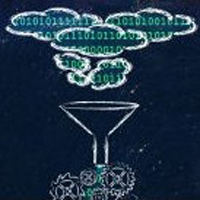 We’re still fixating on all the wrong Big Data start-ups.
We’re still fixating on all the wrong Big Data start-ups.
Hortonworks, one of the primary companies behind Hadoop, recently went public to great fanfare and a $1.2 billion valuation. But Hortonworks and the rest of the so-called Big Data start-ups are actually some of the least interesting Big Data companies.
In fact, of the current crop of 40 start-ups valued at more than $1 billion, virtually none of them sell Big Data technology like Hadoop. But all of them make heavy use of data – lots of it – to deliver a wide array of services.
As consultant Peter Goldmacher declared back in 2013, the biggest winners in Big Data are the “business people that have identified opportunities to use data to create new opportunities or disrupt legacy business models.”
As we enter 2015, expect to see data double the number of billion-dollar start-ups even as public companies learn to grow through data, as well.
It used to be enough for a vendor to ship software and abandon the customer to figure it out (or pay hefty sums of money in consulting fees). SAP, for example, has made billions in revenue by shipping complex software and having customers shell-out multiples of the software license fee for high-priced consultants to make sense of its Byzantine software. That sort of strategy doesn’t work very well anymore. Forget start-ups for a moment. Read more…
Coming Events of Interest
Storage Visions Conference — January 4th-5th in Las Vegas, NV. The fourteenth annual conference theme is: Storage with Intense Network Growth (SWING). Storage Visions Awards presented there cover significant products, services, and companies in many digital storage markets.
International CES — January 6th-9th in Las Vegas, NV. The International CES is the world’s gathering place for all who thrive on the business of consumer technologies. Held in Las Vegas every year, it has served as the proving ground for innovators and breakthrough technologies for more than 40 years — the global stage where next-generation innovations are introduced to the marketplace.
The DCIA’s IoT Marathon — January 6th-9th in Las Vegas, NV. Twelve hours of demos, displays, and discussions of all aspects of the Internet of Things (IoT) in daily segments recorded in the DCIA’s HD-video webcast studio at the Sands Expo and Conference Center.
State of the Net Conference — January 27th in Washington, DC. With unparalleled opportunities to network and engage on key Internet policy issues, this is the largest Internet policy conference in the US and is recognized for its balanced blend of private and public sector participants.
Datacloud South East Asia — March 25th-26th in Johor, Malaysia. Datacloud South East Asia will assess the energy, scalability, security, architecture, and software challenges confronting operators of data centers and enterprises engaged in or considering transitions to the cloud.
Internet of Things Conference — April 15th-17th in San Diego, CA. The IoT Con will focus on how companies are using a variety of technologies, including ZigBee radios, Wi-Fi, and machine-to-machine (M2M)software, to connect things to the Internet, and how they are achieving real business benefits from doing so.
Internet of Things World Forum (IoTWF) — October (2015 Dates TBD) in Dubai, UAE. IoTWF is an exclusive event that brings together the best and brightest thinkers, practitioners, and innovators from business, government, and academia to accelerate the market adoption of the Internet of Things.
